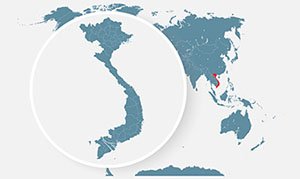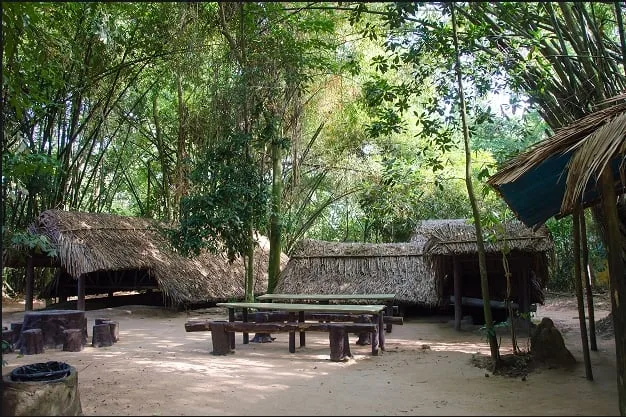Contents
ToggleThe Origins of the Cu Chi Tunnels
The origins of the Cu Chi Tunnels date back to the early 1940s, during Vietnam’s resistance against French colonial rule. At that time, rural villagers and guerrilla fighters relied on the dense jungle of Cu Chi as natural cover while carrying out surprise attacks. With little more than shovels, hoes, and baskets, they began to dig simple underground shelters where they could hide from French patrols and store supplies.
These early hideouts were rudimentary—just shallow pits or short passages—but they marked the beginning of what would become one of the most extraordinary underground networks in the world.
By the 1960s, as the Vietnam War escalated and U.S. involvement deepened, the tunnels were expanded on a massive scale. The Viet Cong transformed the Cu Chi area into a labyrinth of interconnected passages that eventually stretched for more than 250 kilometers, linking dozens of villages and military bases across southern Vietnam. Some tunnels extended all the way from the outskirts of Saigon (today’s Ho Chi Minh City) to the Cambodian border, giving fighters a safe and secret way to move troops and supplies.
The tunnels’ strategic position made them invaluable. From here, the Viet Cong could launch sudden ambushes, retreat underground before U.S. troops could respond, and then reemerge at another location. They became the hidden backbone of resistance operations in the South, supporting major campaigns like the Tet Offensive of 1968. That nationwide attack shocked the world and marked a turning point in the war, showing just how effective the tunnel system had become.
Even with heavy bombing, chemical defoliants, and relentless searches by American and South Vietnamese forces, the Cu Chi Tunnels proved almost impossible to destroy completely. They embodied the resourcefulness and determination of the Vietnamese fighters who built them.
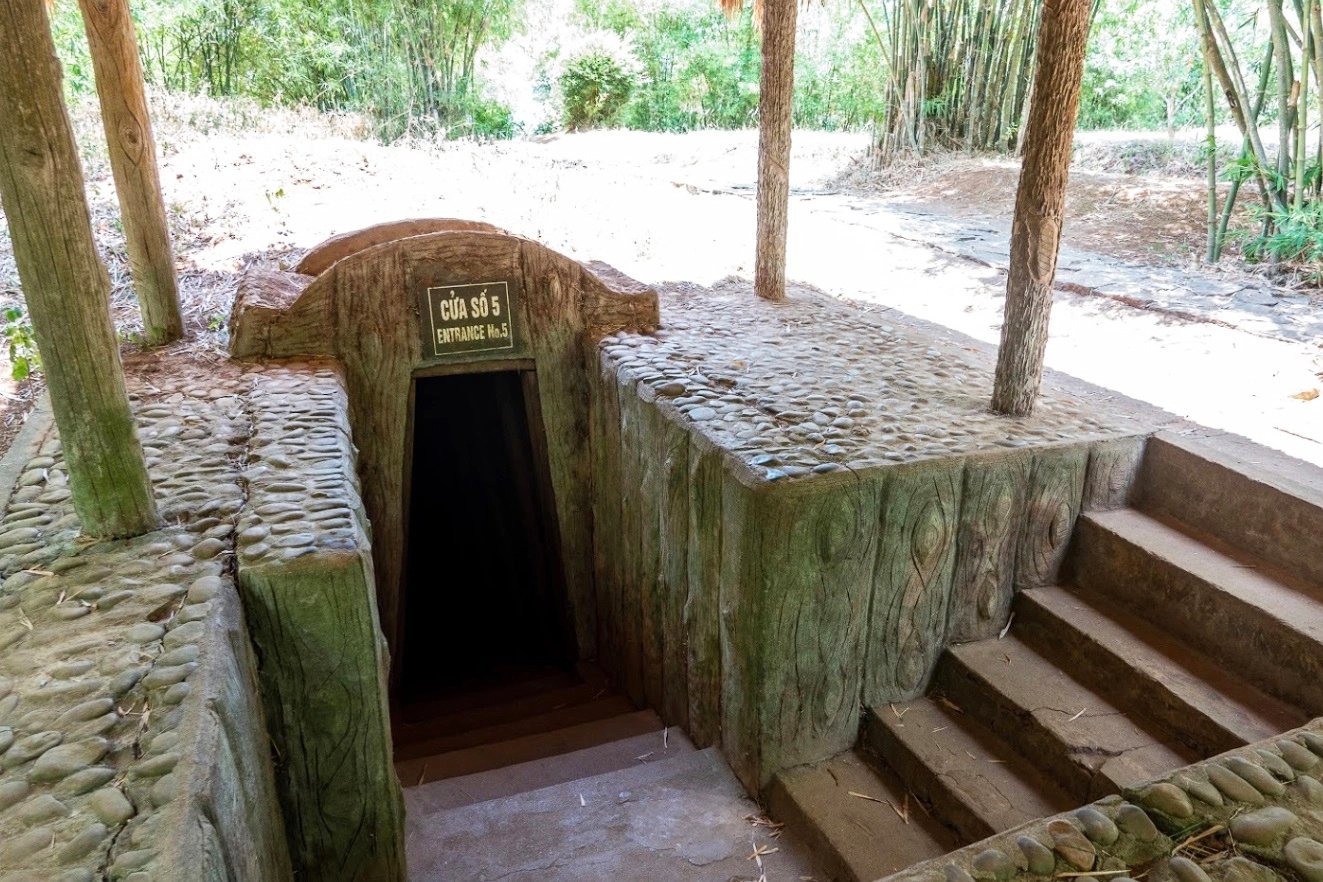
Life Inside an Underground City
To the outside world, Cu Chi looked like a quiet stretch of jungle and farmland. But beneath the ground lay a hidden city, invisible to outsiders. The entrances to the tunnels were so well camouflaged that even trained soldiers could walk directly over them without noticing. Some were disguised as termite mounds or animal burrows, while others were hidden under thick vegetation or even inside the floors of ordinary homes.
The Viet Cong used remarkable tricks to avoid detection. To throw off U.S. sniffer dogs, fighters would wear captured American uniforms or scatter pepper, chili, and soap near the entrances. Sometimes, they even rubbed themselves with aftershave lotion stolen from American bases, confusing the dogs with a familiar scent.
Inside, the tunnels descended 3–12 meters underground and were organized into three main levels. Despite the cramped, airless environment, they contained everything needed to sustain life during long periods of warfare:
- Kitchens with hidden chimneys that vented smoke through long, winding channels, dispersing it far from the source so enemy aircraft wouldn’t detect it.
- Storage areas for weapons, ammunition, food, and essential supplies.
- Bomb shelters and trapdoors for protection against air raids and artillery.
- Underground hospitals and maternity wards, where doctors and nurses performed surgeries, treated wounds, and even delivered babies under candlelight.
- Meeting halls, workshops, classrooms, and small theaters, where cultural performances lifted morale and political meetings were held.
Yet daily life in the tunnels was a constant test of endurance. The air was humid and suffocating, with barely enough oxygen in some sections. The passageways were so narrow that fighters had to crawl on hands and knees, sometimes in complete darkness. Rats, ants, centipedes, and snakes thrived in the dank environment, while swarms of mosquitoes spread malaria.
Food was scarce, and meals often consisted of cassava, wild roots, or rice mixed with foraged greens. Meat was a rare luxury, and protein sometimes came from insects. Fresh water had to be carefully rationed. Despite these harsh conditions, life underground continued. Surgeries were performed with minimal equipment, babies were born in maternity chambers, and children learned lessons while bombs shook the ground above.
The tunnels were not just military hideouts—they were the beating heart of a community that refused to surrender. They symbolized resilience, ingenuity, and the will to survive against overwhelming odds.
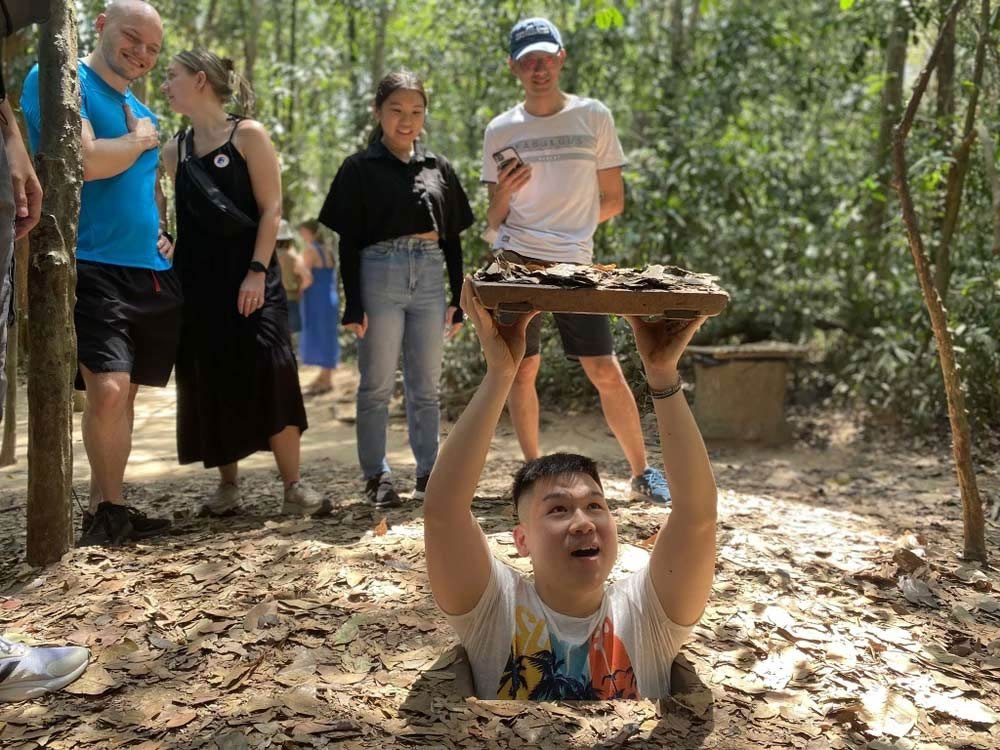
Deadly Traps and the “Tunnel Rats”
The Cu Chi Tunnels were far more than a shelter system — they were also a formidable defensive fortress. Knowing that U.S. troops might eventually discover and attempt to enter the tunnels, the Viet Cong devised a series of ingenious booby traps designed to injure, confuse, or even kill intruders. Many of these traps relied on simple materials like bamboo, sharpened stakes, and hidden pits, but they were terrifyingly effective.
Common traps included:
- Explosive tripwires – concealed across narrow paths, detonating grenades or mines when triggered.
- Punji pits – deep holes filled with sharpened bamboo spikes, often smeared with toxins or natural poisons to cause infection.
- Swinging spike traps – heavy spiked logs that would swing down from above when a hidden trigger was touched.
- Snake and scorpion traps – venomous creatures placed in baskets or jars along tunnel routes, released when lids were nudged.
- Camouflaged trapdoors – false floors that collapsed under weight, dropping unsuspecting soldiers into spiked pits below.
Because aerial bombardments and chemical defoliants couldn’t destroy the tunnel system, the U.S. military created a special group of soldiers tasked with exploring and neutralizing them. These men became known as the “tunnel rats.”
Tunnel rats were usually small, wiry, and fearless. Equipped with little more than a flashlight, a pistol, and sheer courage, they would crawl through pitch-black, suffocating passages only wide enough for one person. Every corner could conceal a trap, an armed guerrilla fighter, or venomous wildlife. Encounters were often at point-blank range, with mere seconds to react.
Many veterans later described the mission as one of the most terrifying duties in Vietnam. Claustrophobia, lack of oxygen, and the constant threat of ambush made the tunnels a psychological battlefield as much as a physical one.
Today, visitors can safely experience the atmosphere of these tunnels. Sections have been widened and reinforced for tourists, allowing you to crawl a short distance underground. While far more comfortable than the original passages, the experience still offers a chilling glimpse into the underground world that defined much of the war.
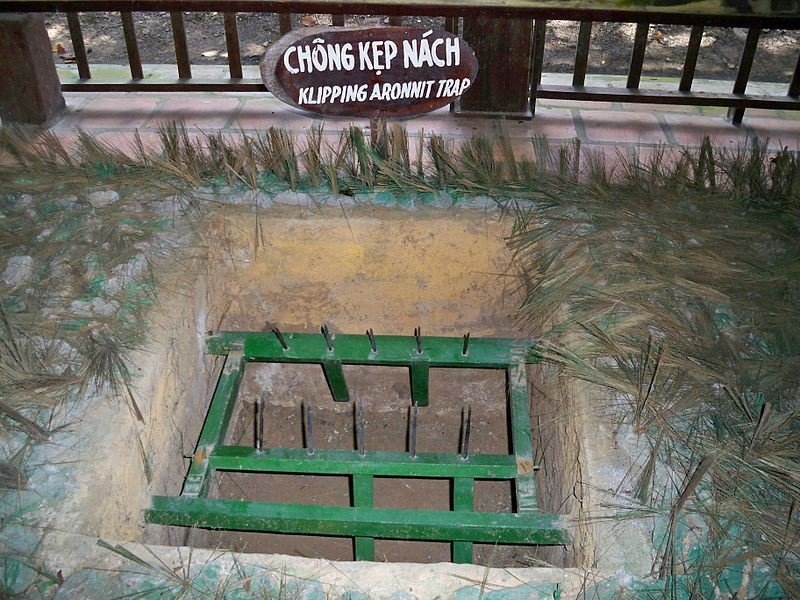
Visitingthe Cu Chi Tunnels: Hours, Tickets & What to Expect
The Cu Chi Tunnels are now one of the most popular historical attractions in southern Vietnam, welcoming thousands of visitors daily. Both main sites are open throughout the year, making them a convenient half-day or full-day excursion from Ho Chi Minh City.
- Opening Hours: Daily from 8:00 AM – 5:00 PM
- Entrance Fees (2025):
- Ben Duoc Tunnels: 90,000 VND (~$4 USD)
- Ben Dinh Tunnels: 110,000 VND (~$5 USD)
Ben Duoc vs. Ben Dinh
- Ben Duoc Tunnels – Located deeper in the countryside, this site is considered more authentic, preserving much of the original structure. It is less crowded, making it ideal for travelers who want a quieter, more realistic glimpse into history.
- Ben Dinh Tunnels – Closer to Ho Chi Minh City, this site is more tourist-oriented. The tunnels here have been widened to accommodate international visitors, and facilities are more developed, with additional exhibits, souvenir shops, and rest areas.
What You’ll Experience on Site
A visit typically includes:
- A short documentary film about the history of the tunnels.
- Walking tours through reconstructed jungle paths.
- Opportunities to crawl through the tunnels (usually 20–100 meters).
- Displays of weapons, booby traps, and war relics.
- Visits to underground kitchens and living quarters.
- Optional firing ranges where visitors (18+) can shoot old military rifles like the AK-47 or M16 (extra fee).
👉 Tip: Bring comfortable clothing, good walking shoes, and water. The tunnels can feel hot and humid even in short sections.
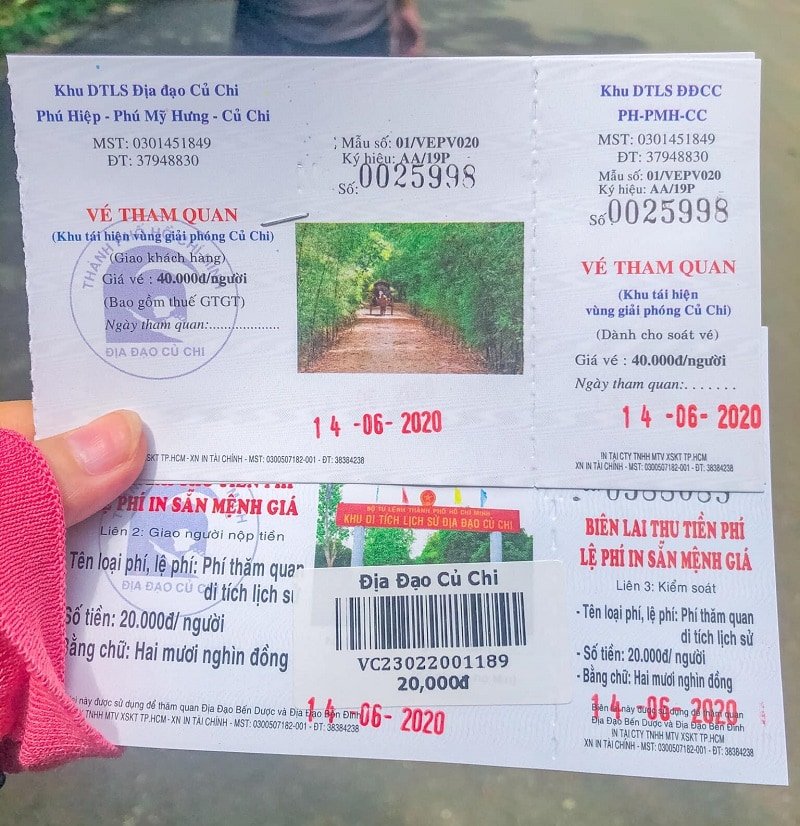
How to Get to the Cu Chi Tunnels from Ho Chi Minh City
The Cu Chi Tunnels lie about 70 kilometers northwest of central Ho Chi Minh City (District 1). Travel time is typically 2–2.5 hours depending on traffic and the chosen mode of transport.
🚍 By Public Bus (Budget Option)
- From Pham Ngu Lao Street (District 1), take bus 04, 65, or 27 to An Suong Bus Station.
- Transfer to bus 122 toward Tan Quy.
- Finally, take bus 70 directly to the Ben Dinh site.
This option is the cheapest (under 50,000 VND total), but it requires multiple transfers and can take up to 3.5–4 hours each way.
🚗 By Private Car, Taxi, or Tour (Most Convenient)
The most popular choice is booking a guided tour or private transfer. Many tour operators in Ho Chi Minh City offer packages that include:
- Round-trip transport (minibus, van, or private car).
- Entrance tickets.
- An English-speaking guide to explain the tunnels’ history.
- Optional stops at handicraft villages or the Cao Dai Temple in Tay Ninh.
A half-day tour usually costs around $20–30 USD, while a full-day tour (including the temple) ranges from $40–60 USD.
🚤 By Boat (Scenic Option)
For a more unique experience, some companies offer speedboat tours along the Saigon River. These tours take around 90 minutes each way and allow you to enjoy countryside views while avoiding traffic. The price is higher (typically $70–100 USD per person), but it’s an unforgettable journey.
👉 Tip: If you want to avoid crowds, visit in the morning. Most group tours depart HCMC around 8:00 AM, arriving at Cu Chi by 9:30–10:00 AM.
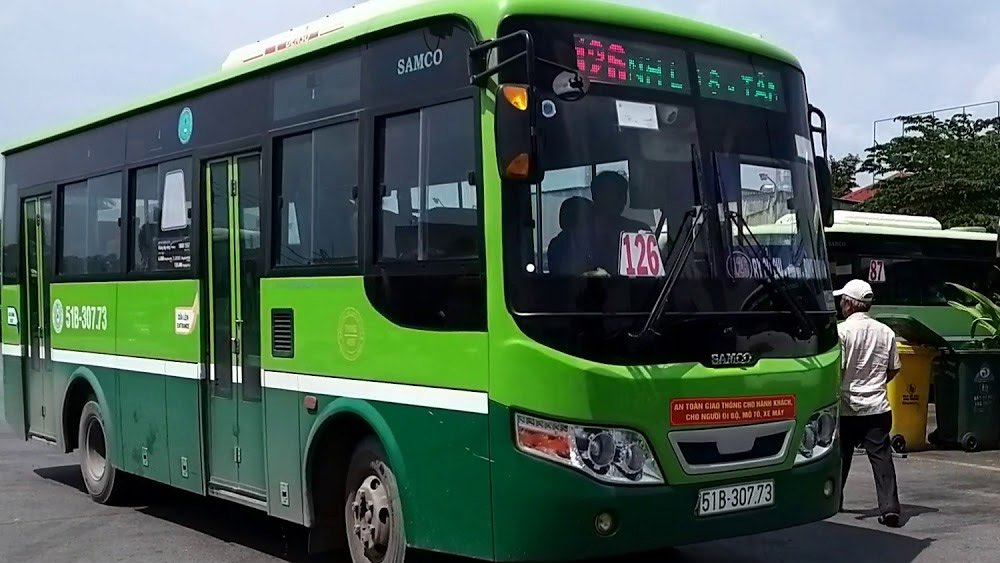
Final Thoughts
The Cu Chi Tunnels are more than an underground maze — they are a living testament to Vietnamese resilience. Ranked among the world’s top underground attractions by CNN, they offer a unique opportunity to step back into history.
A visit here is both humbling and fascinating. You’ll walk the same paths as guerrilla fighters, see reconstructed traps, and experience firsthand the extraordinary underground world that shaped the course of the Vietnam War.

